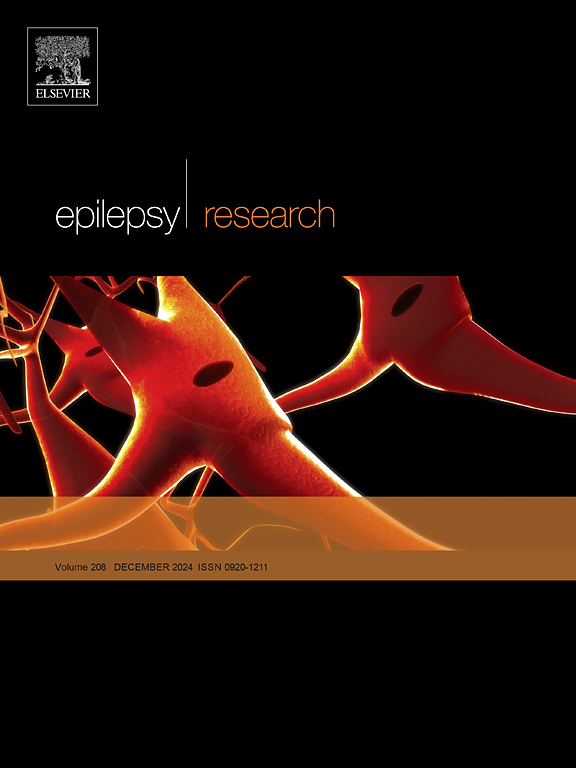基于土耳其脑电图报告的儿科癫痫发作类型分类
IF 2
4区 医学
Q3 CLINICAL NEUROLOGY
引用次数: 0
摘要
本研究利用自然语言处理(NLP)和机器学习方法,利用土耳其脑电图(EEG)报告对小儿癫痫发作类型进行局灶性或广泛性的二元分类。开发并公开发布了一个包含130个土耳其EEG报告的新数据集,解决了该领域资源的稀缺问题。该研究采用了各种文本表示模型,包括TF-IDF、FastText、ElectraTR、XLM和BERTurk,以及分类器,如逻辑回归、支持向量机和CatBoost。使用BERTurk嵌入结合逻辑回归实现了最高的分类性能,准确率为96.6% %。这项工作具有重要意义,因为它是第一个从基于文本的土耳其脑电图报告中探索局灶性与全面性癫痫分类的研究。它强调了上下文嵌入在处理形态学丰富的语言中的关键作用,并展示了NLP技术在推进儿科癫痫诊断方面的潜力。这些发现为自动化诊断过程和提高临床环境效率铺平了道路。未来的研究目标是扩展数据集,纳入脑电图信号数据,并改进模型以获得更广泛的适用性。本文章由计算机程序翻译,如有差异,请以英文原文为准。
Classification of epilepsy seizure types in pediatrics based on Turkish EEG reports
This study focuses on the binary classification of pediatric epilepsy seizure types as focal or generalized using Turkish electroencephalography (EEG) reports, leveraging natural language processing (NLP) and machine learning methodologies. A novel dataset comprising 130 Turkish EEG reports was developed and publicly released, addressing the scarcity of resources in this domain. The study employed various text representation models, including TF-IDF, FastText, ElectraTR, XLM, and BERTurk, along with classifiers such as Logistic Regression, Support Vector Machines, and CatBoost. The highest classification performance was achieved using BERTurk embeddings combined with Logistic Regression, yielding an accuracy of 96.6 %. This work is significant for being the first to explore focal versus generalized seizure classification from text-based EEG reports in Turkish. It underscores the critical role of contextual embeddings in handling morphologically rich languages and demonstrates the potential of NLP techniques in advancing pediatric epilepsy diagnostics. The findings pave the way for automating diagnostic processes and improving efficiency in clinical settings. Future research aims to expand the dataset, incorporate EEG signal data, and refine the models for broader applicability.
求助全文
通过发布文献求助,成功后即可免费获取论文全文。
去求助
来源期刊

Epilepsy Research
医学-临床神经学
CiteScore
0.10
自引率
4.50%
发文量
143
审稿时长
62 days
期刊介绍:
Epilepsy Research provides for publication of high quality articles in both basic and clinical epilepsy research, with a special emphasis on translational research that ultimately relates to epilepsy as a human condition. The journal is intended to provide a forum for reporting the best and most rigorous epilepsy research from all disciplines ranging from biophysics and molecular biology to epidemiological and psychosocial research. As such the journal will publish original papers relevant to epilepsy from any scientific discipline and also studies of a multidisciplinary nature. Clinical and experimental research papers adopting fresh conceptual approaches to the study of epilepsy and its treatment are encouraged. The overriding criteria for publication are novelty, significant clinical or experimental relevance, and interest to a multidisciplinary audience in the broad arena of epilepsy. Review articles focused on any topic of epilepsy research will also be considered, but only if they present an exceptionally clear synthesis of current knowledge and future directions of a research area, based on a critical assessment of the available data or on hypotheses that are likely to stimulate more critical thinking and further advances in an area of epilepsy research.
 求助内容:
求助内容: 应助结果提醒方式:
应助结果提醒方式:


